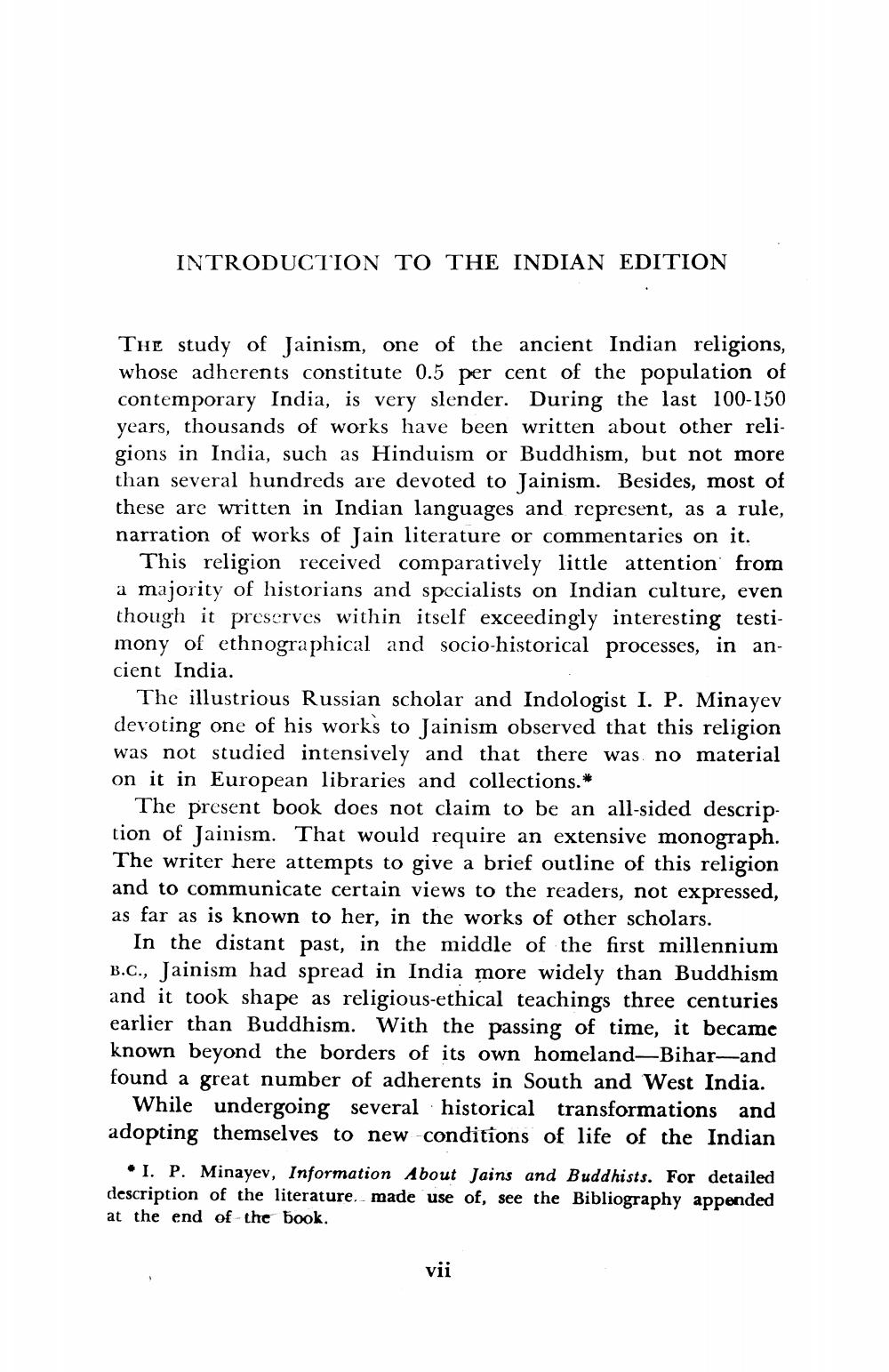________________
INTRODUCTION TO THE INDIAN EDITION
The study of Jainism, one of the ancient Indian religions, whose adherents constitute 0.5 per cent of the population of contemporary India, is very slender. During the last 100-150 years, thousands of works have been written about other religions in India, such as Hinduism or Buddhism, but not more than several hundreds are devoted to Jainism. Besides, most of these are written in Indian languages and represent, as a rule, narration of works of Jain literature or commentaries on it.
This religion received comparatively little attention from a majority of historians and specialists on Indian culture, even though it preserves within itself exceedingly interesting testimony of ethnographical and socio-historical processes, in ancient India.
The illustrious Russian scholar and Indologist I. P. Minayev devoting one of his works to Jainism observed that this religion was not studied intensively and that there was no material on it in European libraries and collections. *
The present book does not claim to be an all-sided description of Jainism. That would require an extensive monograph. The writer here attempts to give a brief outline of this religion and to communicate certain views to the readers, not expressed, as far as is known to her, in the works of other scholars.
In the distant past, in the middle of the first millennium B.C., Jainism had spread in India more widely than Buddhism and it took shape as religious-ethical teachings three centuries earlier than Buddhism. With the passing of time, it became known beyond the borders of its own homeland-Bihar-and found a great number of adherents in South and West India.
While undergoing several historical transformations and adopting themselves to new conditions of life of the Indian
• I. P. Minayev, Information About Jains and Buddhists. For detailed description of the literature.- made use of, see the Bibliography appended at the end of the book.
vii




